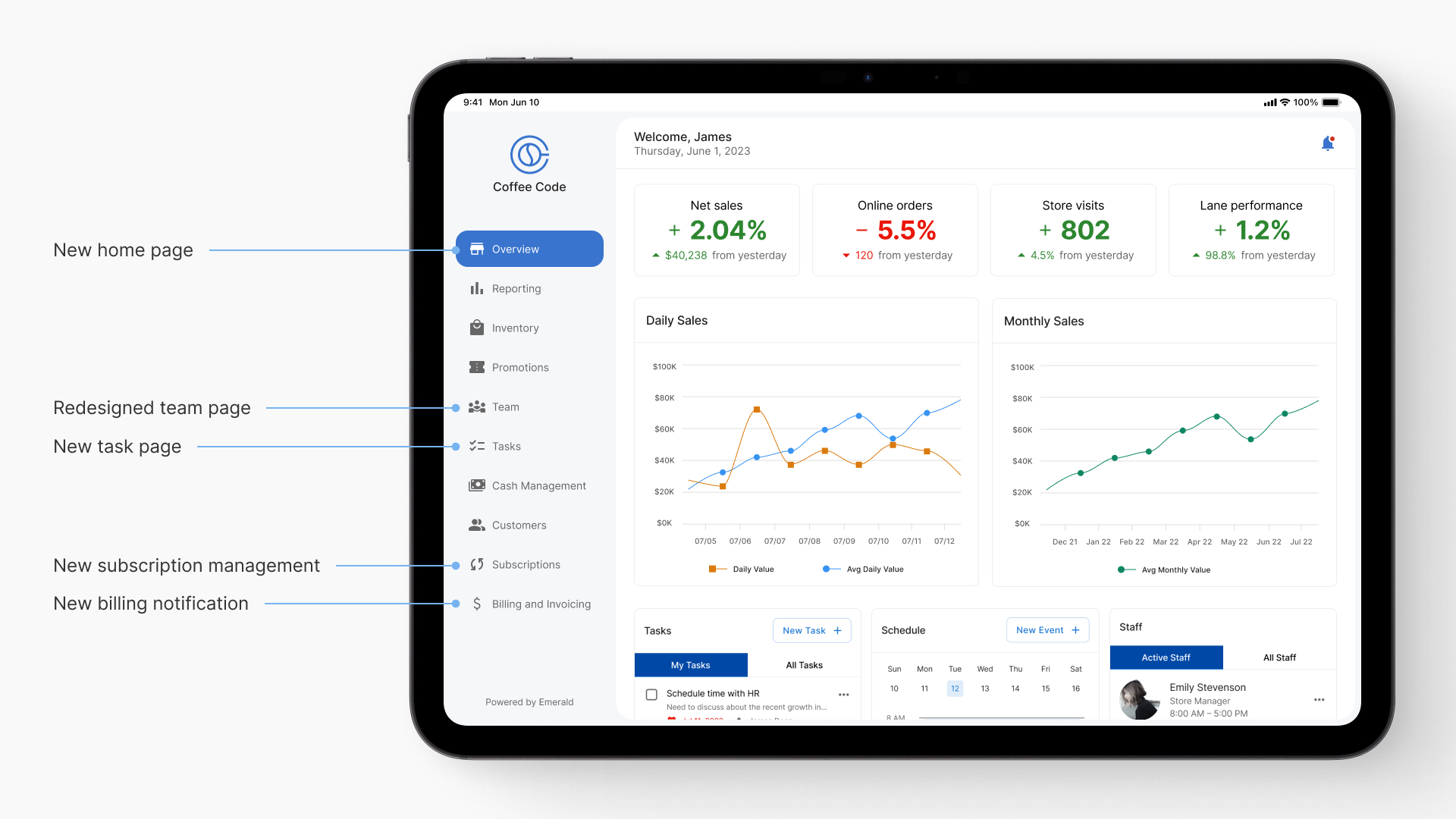Background
During my time at NCR, I was focused on building two new sets of features for Control Panel. This application allows warehouse managers to access all the features they need to manage their inventory.
I was responsible for introducing the new features: a Subscription management interface along with a Billing and Invoicing tab.

Approach
The current state of Control Panel lacked a cohesive design that showcased the customer's brand and NCR's brand. Other details included inconsistent spacing and visual hierarchy that needed to be fixed as well.
To tackle these tasks, I used the design system to build a base for Control Panel while utilizing color and typography to harmonize with the customer's brand.
Impact
Control Panel impacts over 100,000+ customers who are accessing and logging inventories, especially those managing warehouses. This release allows customers to easily access new subscription plans and billing invoices for proper monetary management, a prominent feature that has been missing prior.
Customers
100,000+
Improvement